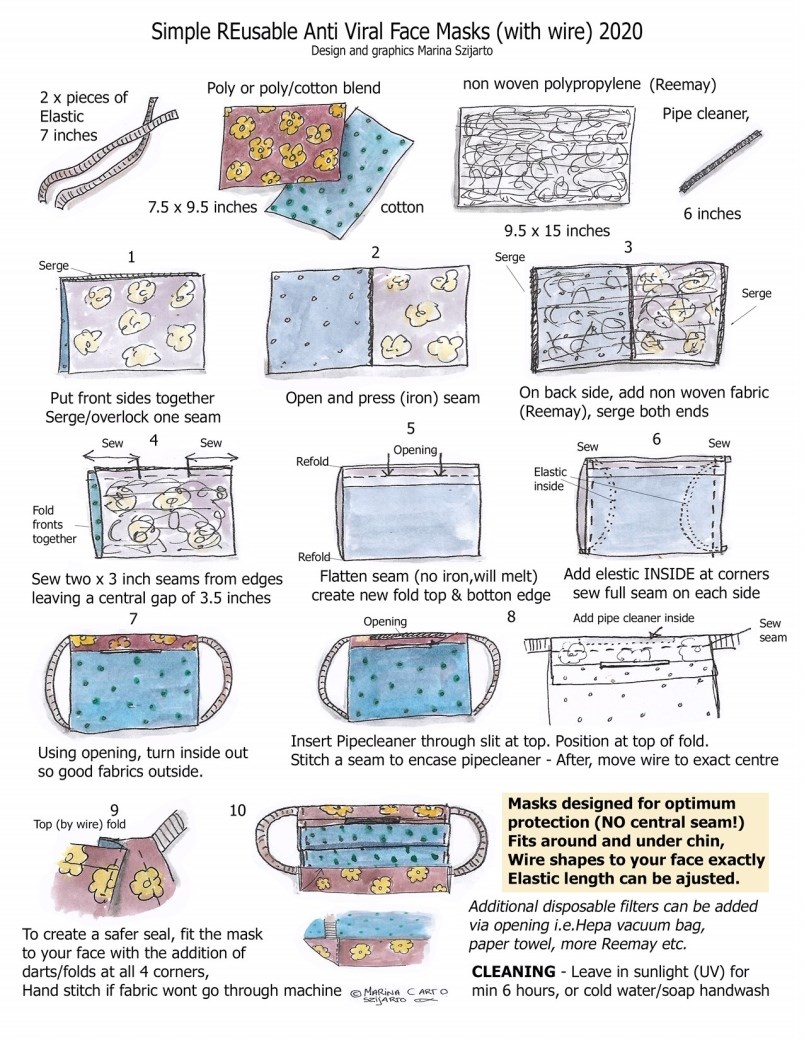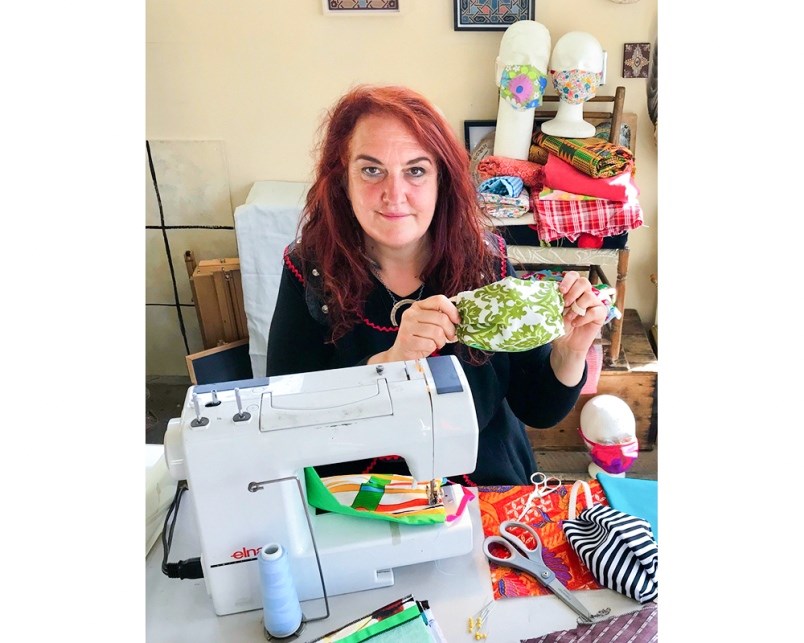Following the announcement by Canada’s top doctor that people can wear non-medical masks in public, a Richmond designer and artist shared her pattern for cloth masks, hoping to empower others to make their own.
Marina Szijarto said she was originally inspired to make the masks — which could help protect others from contracting COVID-19 — by the motto adopted by the Czech Republic.
“They have a motto: My mask protects you, your mask protects me,” said Szijarto, a Richmond-based artist/designer.
“What I really like about that whole idea is that even though there’s inconvenience and discomfort from having to breathe through a mask, in that country it’s almost become like a badge of honour, and (a form of) social bonding and a shift towards community caring and mutual respect.”
She said that mindset — wearing a mask to protect others because you may be asymptomatic — is different than what she’s seen in Richmond, where Szijarto’s “witnessed people being racist” towards others who are wearing masks.
After previously resisting the idea of wide-spread face mask use, Canada’s top doctor said Monday it would be fine for people to wear cloth masks — reserving medical and N95 masks for health care workers — in situations where it might be hard to maintain physical distance, like in a grocery store.
“Wearing a non-medical mask is an additional measure that you can take to protect others around you,” said Dr. Theresa Tam on Monday.
“A non-medical mask can reduce the chance of your respiratory droplets coming into contact with others or landing on surfaces.”
Tam said the policy shift comes from “emerging information” around the globe from the science and medical community.
Szijarto, who spent time researching mask materials and construction before making her own for friends and neighbours, now wants to encourage others to make their own masks — and has shared illustrated instructions.
 Marina Szijarto, a Richmond-based designer and artist, wants to help others make their own cloth face masks at home, and has shared the pattern she came up with.Photograph By MARINA SZIJARTO
Marina Szijarto, a Richmond-based designer and artist, wants to help others make their own cloth face masks at home, and has shared the pattern she came up with.Photograph By MARINA SZIJARTO
It’s something that only takes about an hour and a half with a sewing machine, she said, although you could also sew by hand if you don’t have a machine.
Szijarto said she tried to replicate medical masks, and used a number of fabrics in her design. The outer layer can be a cotton or poly-cotton blend, while the layer that touches your face should be cotton, which is more comfortable.
Inside of those two layers, Szijarto uses a non-woven polypropylene fabric, such as Reemay, which can act as a filter. There’s also a pocket so people can use an additional filter — even a home-made one — if they want.
Szijarto said she believes everybody should be wearing a mask when they go out.
“If everybody was wearing a mask, then everybody would be protected more,” she said. “What it’s doing...is protecting other people in case you’re a carrier...and you don’t know it.”
But she understands it can be intimidating to wear one outside at first, adding she felt “weird” the first time.
“What I really want to do is inspire and empower people to make their own masks…but most importantly to wear one, and for other people to feel like it’s okay. The more people I see (doing it), the more I feel okay about wearing (one).”
Szijarto said she also enjoys using different fabrics when making her masks — which helps make them less “scary” or hospital-like. The reusable aspect of masks is also a bonus, said Szijarto.
The sight of dirty, germ-infested face masks and rubber gloves strewn throughout parks, alongside roads, and outside grocery stores is something many Richmond residents have taken issue with, expressing their disgust on social media.
“It’s not just the garbage aspect of it,” said Szijarto, “but it’s the disrespect to other people.”
If you aren't a sewer, , published by the New York Post, for how to make masks without a needle and thread.
- With files from Alan Campbell, Valerie Leung
Read more from the



